Solving a Puzzle from the Past
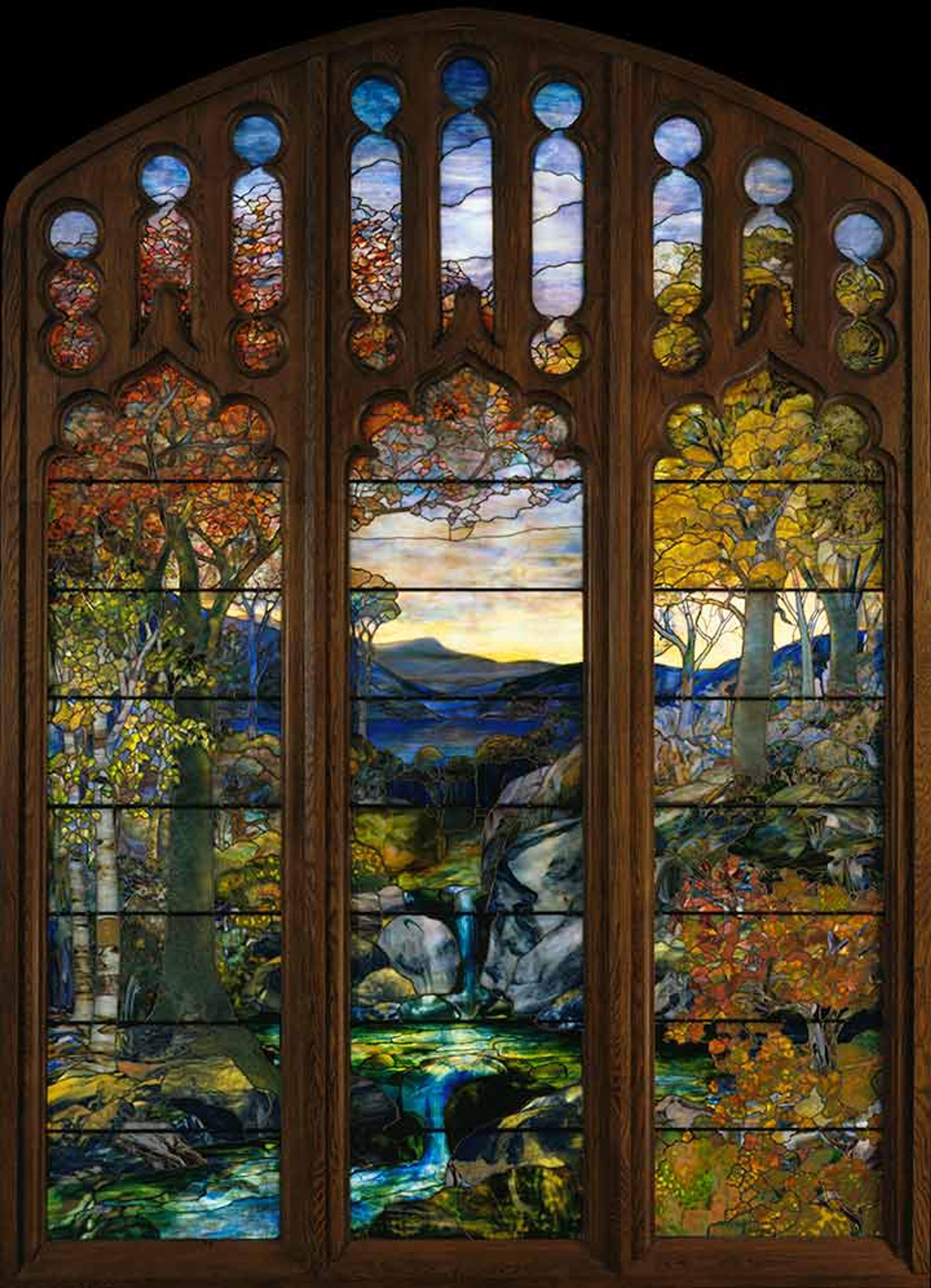
Design attributed to Agnes F. Northrop (1857–1953); made by Tiffany Studios (1902–32). Autumn Landscape, 1923–24. Made in New York. Leaded Favrile glass, 132 x 102 in. (335.3 x 259.1 cm). The Metropolitan Museum of Art, New York, Gift of Robert W. de Forest, 1925 (25.173a–o)
«Do you enjoy puzzles? We do here at The Met. Look at Autumn Landscape. How do you think it was made? With paint or glass? The answer might surprise you! Discover how Louis Comfort Tiffany and his studios made stained-glass windows.»
See all of the tiny details in the trees, water, and sky. It's pretty impressive that none of these was painted in, as was the case with a lot of earlier stained-glass windows. The window is made from more than 1,000 pieces of glass, like a jigsaw puzzle. And each piece of glass could have multiple colors.
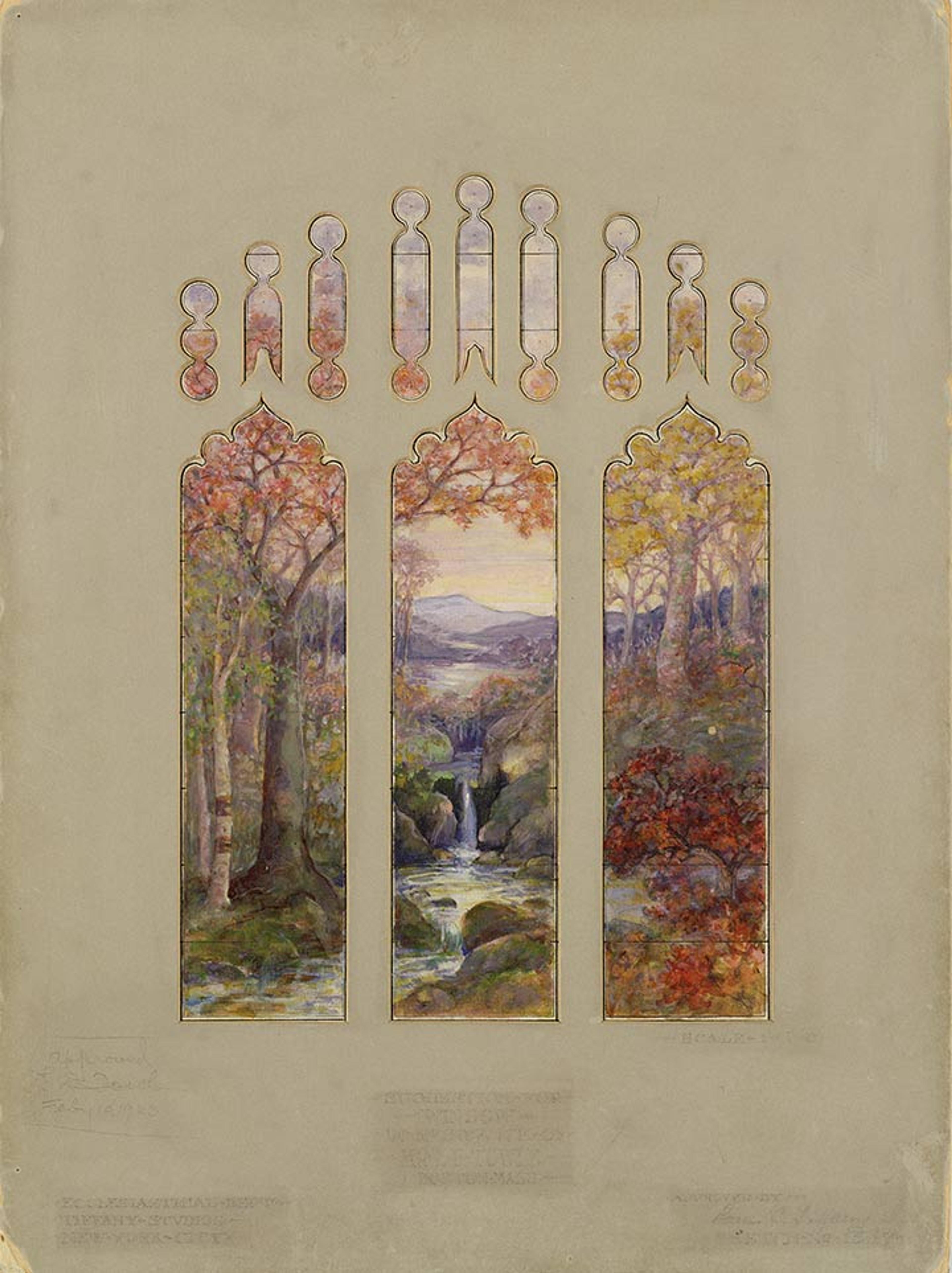
Louis Comfort Tiffany (American, 1848–1933); design attributed to Agnes F. Northrop (1857–1953); made by Tiffany Studios (1902–32). Design for Autumn Landscape Window, 1923. Made in New York. Watercolor, ink, and gouache on paper, 18 1/4 x 13 1/2 in. (46.4 x 34.3 cm). The Metropolitan Museum of Art, New York, Gift of Robert W. de Forest, 1925, transferred from Archives, 1958 (58.658)
Think about the last time you did a puzzle. To make it easier you might have looked at the picture on the box while you searched for the matching puzzle pieces. The artists would do the same thing—they would study the design drawing while they looked for a piece of colored glass that would perfectly match. And what is a design drawing? A design drawing is the first step in making a stained-glass window. The design was a map for the artists who would make the window.

Louis Comfort Tiffany (American, 1848–1933); made by Tiffany Studios (1902–32). Suggestion for Three Upper Windows in Large Hall for the Residence of Mr. T. Eaton, Toronto, Canada, ca. 1904–11. Made in New York. Gouache and watercolor on transparent paper over photograph collage (probably gelatin silver print) mounted on artist's board with graphite, 25 1/2 x 49 9/16 in. (64.7 x 105.5 cm). The Metropolitan Museum of Art, New York, Purchase, Walter Hoving and Julia T. Weld Gifts and Dodge Fund, 1967 (67.654.313)
And how did the designer make the drawing? To answer this question, we used science, technology, and historical research to discover what lies beneath the artwork's surface. The design drawings by Louis Comfort Tiffany (1848–1933) and his studios often reveal layers of discoveries. Let's look closer at the design drawing Suggestion for Three Upper Windows in Large Hall for the Residence of Mr. T. Eaton, Toronto, Canada to learn more about what's hidden under the paint.

Detail of the figure who represents Literature in the design drawing Suggestion for Three Upper Windows in Large Hall for the Residence of Mr. T. Eaton, Toronto, Canada
Look at the girl. Notice how her skin is a bit grey? And the way she sits—she seems frozen, like a doll or a mannequin. Look at the piece of paper draped over her arm. Do you see two light spots? Those are air bubbles trapped between layers of paper that were pasted together. Air got stuck between the papers, making tiny bubbles like the ones in your soda. Tiffany and his team of designers were very good artists, so our curators and conservators were puzzled that this drawing was painted in such an unusual way. We decided to investigate and find out if there was anything underneath the painting that might explain why it looked a little funny.

Detail of the figure who represents Literature and two other figures as seen in the infrared reflectogram (IRR) of Suggestion for Three Upper Windows in Large Hall for the Residence of Mr. T. Eaton, Toronto, Canada. Image courtesy of the Department of Paintings Conservation
After numerous tests, our conservator examined the drawing using infrared reflectography (IRR). What is an IRR? Imagine going to the doctor and getting an x-ray where you can see your bones and skeleton. An IRR image shows what is underneath the painting like an x-ray shows what is under your skin. Under this watercolor design, we found a photograph that shows three figures, not just one. Where we see books and a curtain in the finished drawing, there was once another child, and to the right of the girl in the center, we see legs! An artist painted over the photograph, hiding the figures from you!
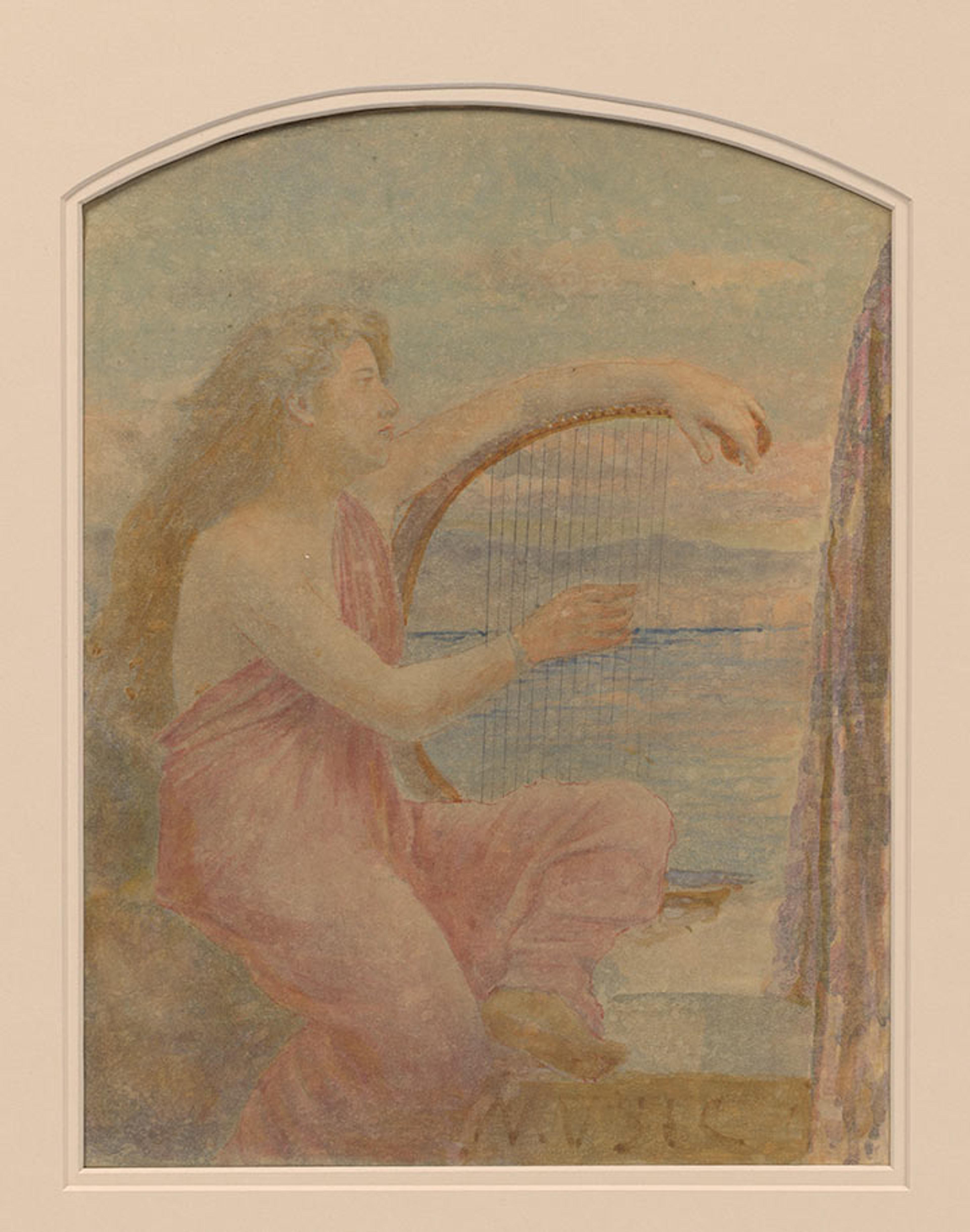
Detail of the figure who represents Music in the design drawing Suggestion for Three Upper Windows in Large Hall for the Residence of Mr. T. Eaton, Toronto, Canada
Have you ever cut up magazines and photos, glued them onto paper, and then painted or colored them? Cool! This is what Tiffany and the designers in his studio were doing more than 100 years ago! They painted watercolors over the black-and-white photographs to create these colorful pictures. First, they pasted the photographs onto board and added some paint. Then they pasted a layer of thin paper (like tissue paper) on top. Finally, they added more watercolors—which is what we see today!
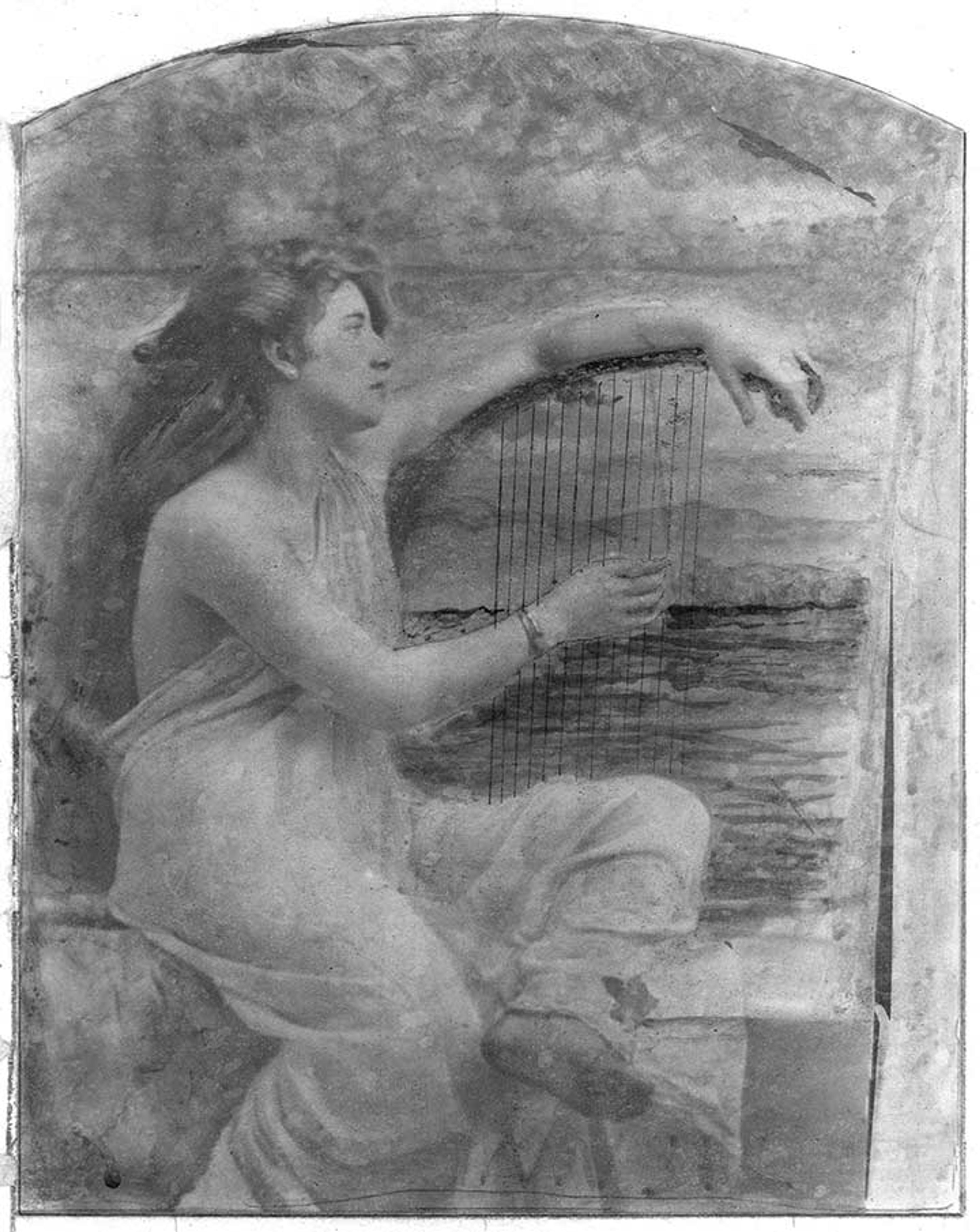
Detail of the figure who represents Music as seen in the infrared reflectogram (IRR) of Suggestion for Three Upper Windows in Large Hall for the Residence of Mr. T. Eaton, Toronto, Canada. Image courtesy of the Department of Paintings Conservation
But why would Tiffany use photographs in his design drawings? When this design was made, Tiffany Studios (owned by Louis Comfort Tiffany) was one of the most popular decorating companies in the world. It designed and produced interior decorations, like the furniture and curtains, for their customers' homes. Tiffany Studios was best known for the beautiful stained-glass windows they made for their clients. These windows were very expensive, so Tiffany Studios showed their customers drawings of what their windows would look like before they started making them.
Sometimes a client would not like the first, or second, or third design. It took a long time for the artist to paint, and re-paint, and re-design each one. Photography offered a solution. For the first time, a designer could make multiples and variations quickly. Imagine, color photography and Photoshop didn't exist yet! This design drawing shows that Tiffany imagined new ways to use photographs. What do you think Tiffany would have created if he had Photoshop and color photography?
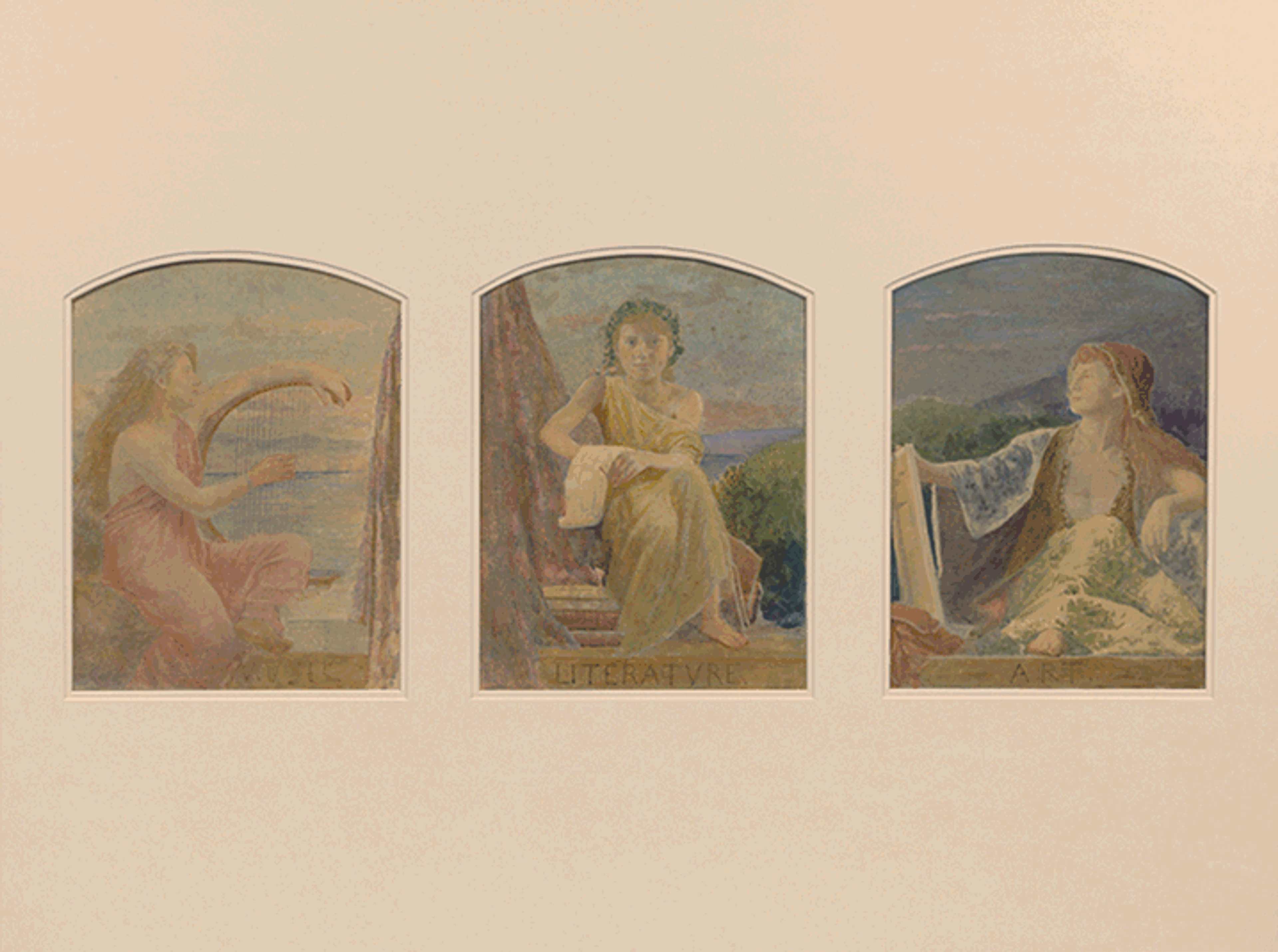
GIF of design drawing and IRR of Suggestion for Three Upper Windows in Large Hall for the Residence of Mr. T. Eaton, Toronto, Canada. IRR courtesy of the Department of Paintings Conservation
Tiffany used family members as models for his artwork. His children and grandchildren remembered posing for Tiffany in costumes. Ask a friend or family member to take a photo of you dressed up. Then make your own design drawing!
Jalena Jampolsky
Jalena Louise Jampolsky was the 2016–17 Tiffany & Co. Foundation Curatorial Intern in American Decorative Arts in The American Wing.